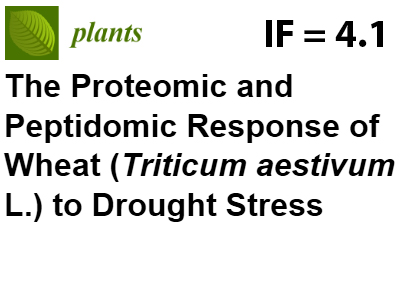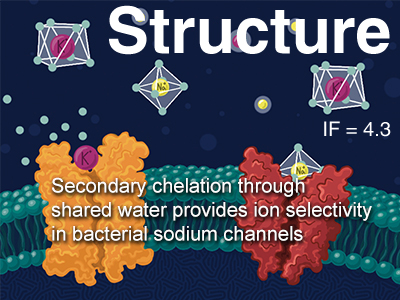Press-room / Digest

The Proteomic and Peptidomic Response of Wheat (Triticum aestivum L.) to Drought Stress
Researchers from the Laboratory of Systemic Protein and Peptide Analysis at the IBCh RAS, together with colleagues from the All-Russian Research Institute of Agricultural Microbiology, investigated how soft wheat adapts to drought at the proteome and peptidome levels. In leaves under water deficit, dehydrins, RRM-domain proteins, dirigent proteins, and nonspecific lipid transfer proteins—multifunctional proteins involved in lipid transport, membrane remodeling, and pathogen defense—were activated. In roots, enzymes related to sulfur metabolism, LEA proteins, and malic enzyme were upregulated, enhancing antioxidant protection. For the first time, an extracellular peptidome was described that includes phytocystatins, plantacyanins, and CAPE peptides—molecules capable of regulating intercellular signaling and increasing drought tolerance. This study provides the first comprehensive evidence of complex, organ-specific changes in the proteome and extracellular peptidome of soft wheat under prolonged drought, revealing new molecular components of intercellular communication that may serve as targets for improving crop stress resilience. The results are published in Plants.

«Secondary Chelation» Mechanism is Proposed to Explain the Selectivity of Bacterial Sodium Channels
Sodium channels play an important role in nature — for example, they determine the excitability of the nervous system and muscles. Their selective conductivity has been intensively studied for many decades, but its physicochemical basis is still unclear. In a new theoretical paper, scientists from the Institute of Bioorganic Chemistry have proposed the so-called “secondary chelation” mechanism, in which the spatial organization of water molecules in the hydration shell of the ion plays a key role. The selectivity filter of a bacterial sodium channel is designed to optimally interact with the hydration shell of Na+, while the shell of K+ is forced to “shrink”, which prevents its passage. The work was published in the journal Structure and was also awarded an illustration on the cover of the issue. Learn more

Mechanism of Translation Termination Revealed
Protein biosynthesis by the ribosome is one of the most important reactions in nature. The length of the polypeptide chain is strictly determined by the start and stop codons in mRNA. Translation termination is necessary for the timely completion of protein biosynthesis and the release of the polypeptide product from the ribosome. This process is regulated by specific proteins, the so-called "release factors", which recognize stop codons and mediate the hydrolysis of the ester bond in the peptidyl-tRNA molecule localized in the catalytic center of the ribosome. The new study shows the role of the release factor and the 2'-OH group of tRNA in the catalysis of polypeptide cleavage through the formation of a "bridged" cyclic intermediate. The work was published in the journal Science. Learn more

The molecular mechanism of redox interaction between neuroglobin and cytochrome c
Neuroprotective activity of neuroglobin (Ngb) is presumably based on its redox interaction with cytochrome c (Cyt c), the mechanisms of which have not yet been elucidated. Authors developed a new methodological approach to study the electron transfer between heme proteins based on Raman spectroscopy. We studied the conformational changes in the Cyt c heme and the effect of the protein microenvironment of Cyt c and Ngb hemes on electron transfer between them using developed approach. Obtained data allowed us to propose a step-by-step mechanism of interaction between Ngb and Cyt c. Understanding the mechanisms of interaction between Ngb and Cyt c is necessary for future practical applications related to the therapy of neurodegenerative diseases. The results are published in the International Journal of Biological Macromolecules. Learn more

Why is the bush cricket green?
A team of scientists with the participation of researchers from the Institute of Bioorganic Chemistry RAS has revealed the nature of the green pigment in the bush cricket Tettigonia cantans. It turned out that the bush cricket owes its protective coloration to a chromoprotein with a unique fold that contains two chromophores simultaneously. One of them is a yellow carotenoid, and the other is a blue bilin. The mixture of the two colors results in a bright green coloration, practically indistinguishable from grass and allowing the animal to cleverly hide. The work has been published in PNAS. Learn more

